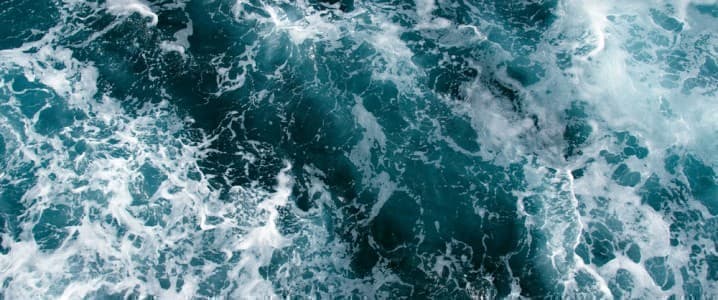Tidal energy is a renewable energy source produced by harnessing the ocean's natural tidal currents. Since the 20th century, tidal currents have been used around the world to generate electricity. There are three ways to generate tidal energy: tidal currents, weirs, and tidal lagoons. Turbines are typically installed in tidal currents, or fast-flowing bodies of water, to produce a reliable flow of electricity. Predictable tides enable safe and reliable power generation. Currently, tidal energy is in its infancy, with only a small portion of the world's potential tidal power being used to generate clean electricity. However, tidal energy can be produced anywhere where the tidal currents are strong enough and the terrain is suitable for installing generators and other necessary equipment.
Despite the potential to produce vast amounts of clean energy, many countries still show little interest in tidal power, with the United States, for example, having no projects. The United States is concerned about legal rights to underwater land and the potential environmental impacts of operations. Furthermore, experts believe that this technology needs to be improved to increase the amount of energy produced by tidal currents while avoiding negative environmental impacts. Technological innovations are likely to attract higher levels of funding from investors looking to profit from alternative renewable energy sources.
Tidal energy projects have the potential to provide large amounts of clean energy, but some experts are concerned about the project's impact on the environment. Harnessing the strength of the tides to generate energy requires the installation of large machinery. However, these machines can disrupt the flow they are trying to exploit. Weir systems rely on large dam structures that store and release water to power turbines, which can change local water levels and negatively impact the land and, in turn, flora and fauna. . It also changes the salinity of the water, which can have negative effects on marine life.
Despite environmental concerns, many believe that tidal energy can support the green transition by providing large amounts of carbon-free energy. Additionally, greater innovation could improve the methods used to produce tidal energy, making it less impactful on the environment. Some countries have greater potential for tidal project development than others, such as China, France, the United Kingdom, Canada, and Russia.
Although tidal energy is still in its infancy, some governments are investing in new technologies and pilot projects to see if tidal energy can be used to generate clean electricity on a commercial scale. . In February, the U.S. Department of Energy (DoE) announced a $6 million investment in two ocean energy projects. The funding will be split between a team led by East Sound, Washington-based Orcas Power and Light Cooperative (OPALCO) and Portland, Maine-based Ocean Renewable Power Company (ORPC).
Opalco plans to install tidal power turbines in Rosario Strait in the San Juan Islands to produce approximately 2 MW of electricity, which will provide electricity to islanders in a pilot project. ORPC will install two tidal energy devices in Alaska's Cook Inlet to explore the potential for energy generation in the region. Cook Inlet is considered the largest tidal energy resource in the United States. “Ocean energy allows us to sustainably harness the power of our oceans and rivers to provide clean, reliable power to rural and remote communities,” said U.S. Energy Secretary Jennifer Granholm. The projects announced today are part of the federal government's largest investment to advance technology to recover energy from ocean tides and river flows, while decarbonizing hard-to-reach coastal areas across the country. The aim is to support people and increase their energy independence and resilience. Utilize locally generated energy. ”
Meanwhile, a report from Finland's LUT University assessed how the UK could develop a 100% clean energy system by 2050. In the report, researchers found that a successful transition will require the development of at least 27 GW of wave power systems. Tidal energy capacity will increase by mid-century. This needs to be supported by the deployment of more battery storage capacity. The report suggests that increasing the UK's tidal power capacity alongside other renewable energy sources could help move away from high-cost fossil fuel and nuclear-based energy. There is.
The costs associated with producing tidal energy have nearly halved since 2018 thanks to technological innovations, and costs are expected to fall further as commercial-scale tidal energy projects become more common. Although the UK government has not announced a clear strategy for tidal power, tidal projects have been included in UK clean energy auctions in recent years. Installed tidal power capacity in the UK is expected to increase from around 10.4MW currently to more than 50MW by 2027.
Written by Felicity Bradstock, Oilprice.com
Other top articles on Oilprice.com:


